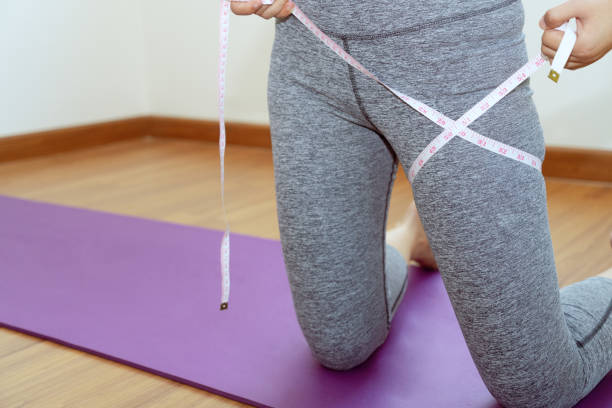Vertigo is more than just an uncomfortable feeling of dizziness, it has potential risks, especially when the dizziness escalates. If you have a feeling akin to spinning, or perceive that your surroundings are moving, it’s probable you’re dealing with vertigo. This condition can pose difficulties to your ability to keep balance and perform your daily tasks.
Causes of Vertigo
Before you do any exercise to get rid of the dizziness, you must first understand what vertigo is and what triggers it. Vertigo is not an illness or a condition but rather a symptom of an underlying health condition that you may need to get checked.
Common Causes
The inner ear plays a vital role in keeping a person’s balance. When vertigo strikes, there’s a big chance that an inner ear problem causes it. But other things could cause vertigo, such as nerve and neurological problems.
Benign Paroxysmal Positional Vertigo (BPPV)
BPPV is a feeling where you feel like you’re spinning or everything around you is turning. It is triggered by a sudden change in your head position, but the effect doesn’t last for long. This symptom usually happens when you tilt your head up or down when you get out of bed or lie down. The severity of the symptom varies on the person.
Benign Paroxysmal Positional Vertigo (BPPV) symptoms may include nausea, vomiting, dizziness, loss of balance, and a sense of environmental spinning. It has something to do with the calcium crystals getting loose in your inner ear that causes you to lose your sense of balance when you move your head. If you have prolonged or severe symptoms, it is best to seek medical advice from doctors.
Migraines
If you have been diagnosed with migraine, you may experience vertigo as you have high sensitivity to light or sound. Migraine is a common health condition that affects many adults.
Vestibular Neuritis
Vestibular neuritis is a condition that affects the vestibulocochlear nerve in the inner ear that sends the balance and head position signals from your inner ear to the brain. When the nerves become inflamed, it disrupts the information signal to the brain, causing the vertigo symptom.
Labyrinthitis
Labyrinthitis is also an ear condition where the labyrinth of your ear becomes swollen, which affects your hearing and balance. Vertigo is one of the symptoms you may feel alongside other symptoms.
Make sure you’re extra protected while working out: Best Exercise Mats for Home Workouts

Exercises for Vertigo to Try at Home
Getting to the bottom of your vertigo problem is the first step to finding a suitable remedy. Knowing what is causing your vertigo will only be answered by medical professionals. Your doctor or therapist may recommend the following exercises but make sure they do them before proceeding.
Epley Maneuver
Epley maneuver is done when your vertigo originates from your left ear and side. To begin, prepare your bed by placing a pillow under you to rest yourself when you lie down. The pillow should be placed between your shoulders when it’s time to lie down.
To start the home Epley maneuver exercise, position yourself sitting at the edge of your bed. Turn your head 45 degrees towards your left. Your head should not reach as far as your left shoulder. Do not move the position of your head as you quickly lie down on the bed on your back. Ensure that the pillow is placed underneath your shoulders. Hold your position for 30 seconds for vertigo to stop.
Next, turn your head halfway without raising your head at 90 degrees to the right. Hold the position and wait for 30 seconds. Then, shift your head and body to the right on its side, positioning yourself looking at the floor. Again, wait for 30 seconds in that position.
After the waiting time, slowly return to the sitting position. Wait for a few minutes seated before doing any other movement.
This Epley Maneuver exercise is applicable for BPPV symptoms. If your vertigo is diagnosed as coming from the right ear, you can perform this exercise reversely, starting by turning your head 45 degrees to the right. Execute these movements three times before sleeping until your symptoms improve and you don’t feel any dizziness within 24 hours.
You may also try light exercises using: Best Ankle Weights
Brandt-Daroff Exercise
The Brandt-Daroff is applicable for Benign paroxysmal positional vertigo (BPPV) and sometimes for labyrinthitis. It’s one of the many exercises that speed up the compensation process of vertigo and eventually end the symptoms. It doesn’t permanently eliminate the symptom, but it helps reduce vertigo.
To perform this exercise, you need to be seated in an upright posture. Then, tilt and angle your head 45 degrees away from the side where your vertigo originates. Lie down on one side with your nose pointed up. Wait for 30 seconds or longer while maintaining your pose until vertigo eases off. Slowly sit back up before repeating the movement on the other side.
Complete the movements from three to five times per session. Do three sessions per day for up to two weeks or until your condition improves.
Semont Maneuver
The Semont maneuver is applicable to perform if you’re experiencing dizziness from your left ear and the side.
Begin the Semont Maneuver by sitting on the edge of your bed. Then, turn your head 45 degrees to the right. Lie down quickly on your left side and hold your position for 30 seconds. Maintain the direction of your head, then move quickly to the opposite end of the bed. Lie for 30 seconds while looking at the floor.
Slowly, come back to being seated and wait for a few minutes before performing the maneuver on the opposite side. Do this exercise three times a day until your vertigo is gone for 24 hours.
You may also use: Best Sit-Up Benches
Cawthorne Exercises for Vertigo
Cawthorne exercises for vertigo are simple movements you can perform to help you regain your balance when you have a vertigo episode. Cawthorne exercises are done if you have BBPV or Ménière’s disease. This group of exercises is recommended to be performed in the morning and at night before bed.
As you first try these exercises for vertigo, you may feel dizzy for several weeks. It is best if you are well guided and watched over by a person.

Exercise 1
Sit on the side of your bed while holding your head still. With only your eyes, look up as far as you can. Then, look down as far as you can. Next, from side to side, look as far as you can. Return your eyes looking forward.
Stretch your arm straight towards the front. Focus your vision on your index finger. Then, slowly bring your index finger to the tip of your nose while your eyes are fixed on the index finger.
Exercise 2
Perform this exercise with your eyes open and complete one rep, then repeat the movements with your eyes closed. Sit on the side of your bed and bring your head back as far as you can. Next, bring it forward to the point that your chin touches your chest. Turn your head from side to side.
Exercise 3
You will need a small ball to perform this exercise. To start, place yourself at the side of the bed, sitting. Shrug your shoulders upward and straight, then relax them. Bend over and use your fingers to try reaching the ground. Return to the sitting position. Hold the ball in one hand, then toss it to the other hand. Throw the ball higher than your eye level, so you’ll have to look up.
Exercise 4
For this exercise, prepare a ball and ask a person to watch over you if it gets uncomfortable for you. Perform exercises number 1 and 2. Pass a ball between your legs and above your head. Perform a repetitive sitting down and standing up movement. Turn around in a circle a different way each time you stand up. If you get the hang of it, try to do this exercise with your eyes closed and with a person standing by to watch over you.
Exercise 5
Prepare an exercise space with no obstacles and sloped surface-like stairs. Establish a starting point where your first turn will be on the right. Complete the walk, then repeat on the opposite side.
Next, walk up and down the slope or stairs. You can try performing these movements with your eyes closed as long as you have someone to guide you and hold on to.

Conclusion
Before resolving to self-treatment to get rid of vertigo, it is still best to seek medical advice from your doctor. There are different causes of this symptom, and getting to the bottom of the problem is essential for effective treatment. It could be dangerous to try home exercises without health recommendations, primarily if you wrongfully diagnose yourself.
Always put your safety first when you perform these home exercises. It would be best if you wait 30 seconds or until your dizziness eases off before performing any other movements. Ask someone to be with you when you are feeling nauseous and when you’re doing these exercises.





